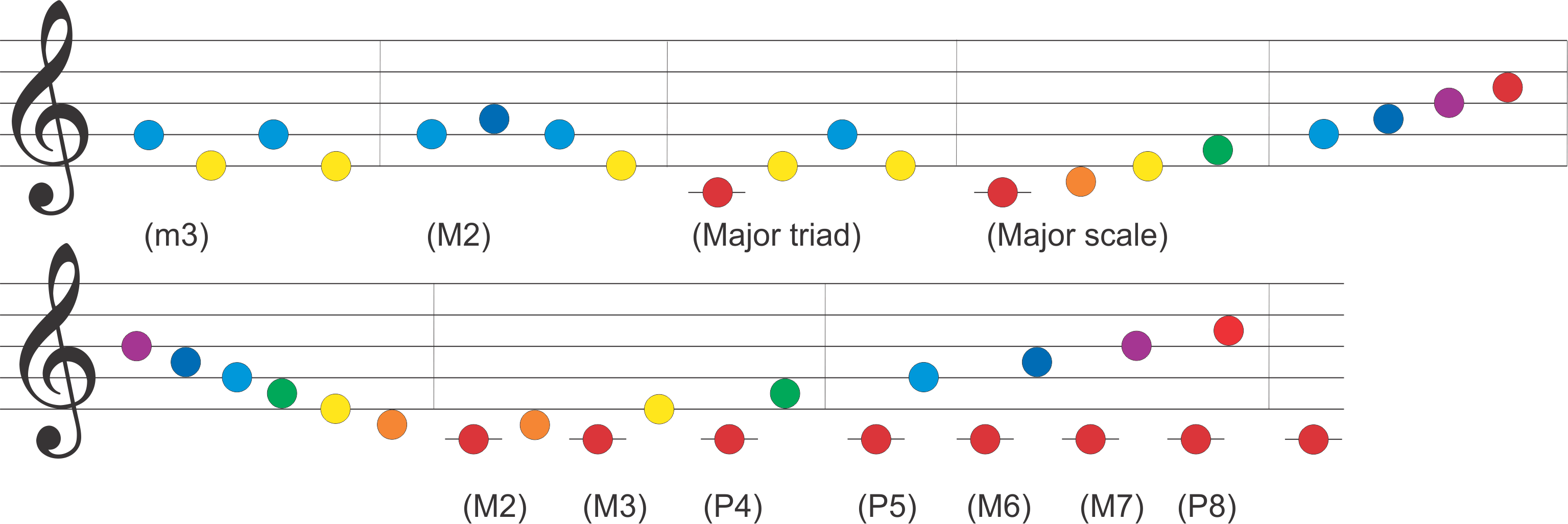Singing all the intervals isn’t too difficult for children since there's nothing new to learn and the pattern is predictable. Notes and hand signs reinforce what they’ve learned so far, and that's a good feeling. At some point, talk about where the major triad, major scale, and each interval occurs in the piece.

Encouraging students to think of these elements while singing helps them think more like musicians. This means that rather than thinking only one note after another, they think about how the notes are grouped into familiar patterns.
Learning up to this point (finishing the major section) is a logical place to take a breather before going on to finish the piece (see DS-3. "Daily Do" Adding the Minor Section). However, it's best not to wait too long or students may think you didn't go on because the minor section is too hard. And, of course, it's not.
Here I am with two of my four-year-old students and their moms (on their knees this day doing mirroring). Sometimes things get a little silly . . . see what happens:
Here's a sample of young students who are learning Daily Do at a workshop. Notice how precise the little girl in the brown and white dress is with her hand signs.
The continuation of "Daily Do" is in a second game: DS-3. "Daily Do" Adding the Minor Section.
